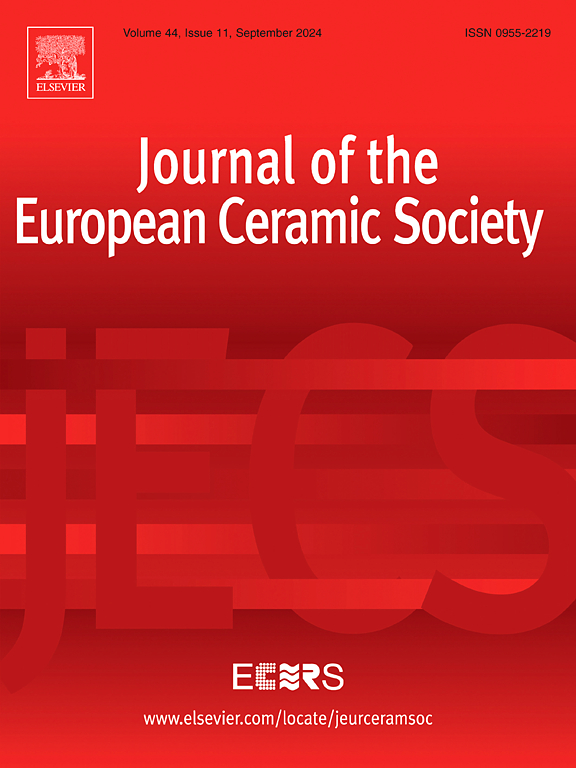Growth mechanism and sintering properties of high crystallinity Archimedean polyhedral (Zr0.5Hf0.5)B2 nanoparticles
IF 5.8
2区 材料科学
Q1 MATERIALS SCIENCE, CERAMICS
Journal of The European Ceramic Society
Pub Date : 2025-01-31
DOI:10.1016/j.jeurceramsoc.2025.117251
引用次数: 0
Abstract
High quality ceramic powders are crucial for the performance of composite materials, yet preparing powders with good morphology and high crystallinity still faces enormous challenges. Herein we report a topological Archimedean polyhedron of (Zr0.5Hf0.5)B2 nanoparticles were synthesized via a high pressure liquid-phase and coprecipitation co-assisted boro/carbothermal reduction method. A nonclassical crystallization model where both oriented attachment and screw dislocation growth mechanism occur simultaneously. The microstructural evolution during the growth process of borides indicates that the growth mechanism of the new layer on the surface of diborides is mainly explained by the layered structure and trapezoidal profile. The initial growth stage energy of each layer comes from interface defects and lattice mismatches during atomic diffusion processes. The directional attachment of clusters leads to the generation of a large number of dislocations in the system, resulting in the formation of polyhedral structures. Benefiting from the high crystallinity polyhedral morphology, the powder shows excellent oxidation resistance, i.e., the thickness of ceramic oxide layer prepared by Archimedean polyhedron powders is 86.43 μm at 1400 °C for 3 h. This work holds significant importance for the development of new ceramic powders preparation methods and provides a novel approach for studying the performance improvement of ultra-high temperature ceramic materials.
求助全文
约1分钟内获得全文
求助全文
来源期刊

Journal of The European Ceramic Society
工程技术-材料科学:硅酸盐
CiteScore
10.70
自引率
12.30%
发文量
863
审稿时长
35 days
期刊介绍:
The Journal of the European Ceramic Society publishes the results of original research and reviews relating to ceramic materials. Papers of either an experimental or theoretical character will be welcomed on a fully international basis. The emphasis is on novel generic science concerning the relationships between processing, microstructure and properties of polycrystalline ceramics consolidated at high temperature. Papers may relate to any of the conventional categories of ceramic: structural, functional, traditional or composite. The central objective is to sustain a high standard of research quality by means of appropriate reviewing procedures.
 求助内容:
求助内容: 应助结果提醒方式:
应助结果提醒方式:


